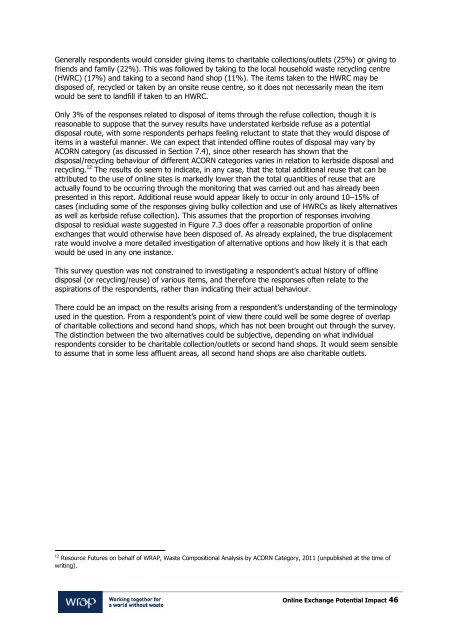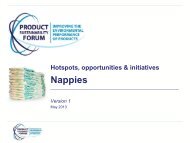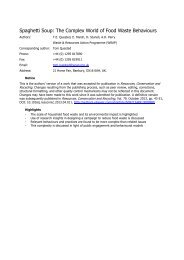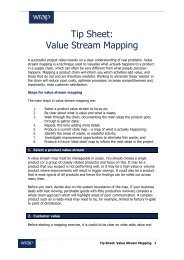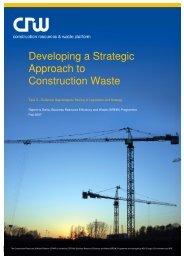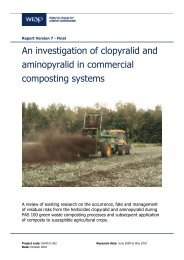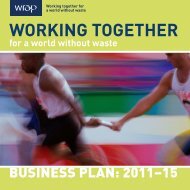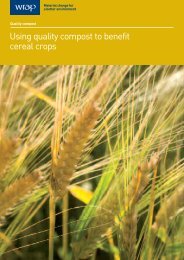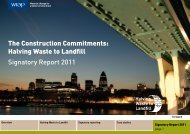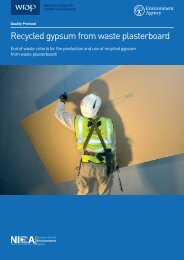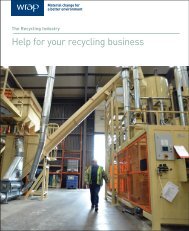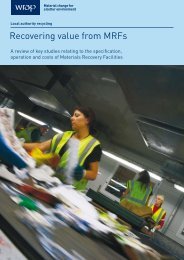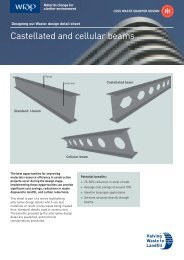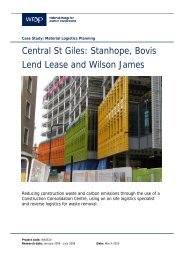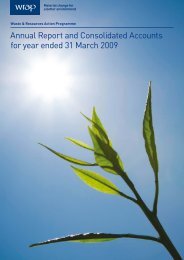Online Exchange Potential Impact - Wrap
Online Exchange Potential Impact - Wrap
Online Exchange Potential Impact - Wrap
You also want an ePaper? Increase the reach of your titles
YUMPU automatically turns print PDFs into web optimized ePapers that Google loves.
Generally respondents would consider giving items to charitable collections/outlets (25%) or giving to<br />
friends and family (22%). This was followed by taking to the local household waste recycling centre<br />
(HWRC) (17%) and taking to a second hand shop (11%). The items taken to the HWRC may be<br />
disposed of, recycled or taken by an onsite reuse centre, so it does not necessarily mean the item<br />
would be sent to landfill if taken to an HWRC.<br />
Only 3% of the responses related to disposal of items through the refuse collection, though it is<br />
reasonable to suppose that the survey results have understated kerbside refuse as a potential<br />
disposal route, with some respondents perhaps feeling reluctant to state that they would dispose of<br />
items in a wasteful manner. We can expect that intended offline routes of disposal may vary by<br />
ACORN category (as discussed in Section 7.4), since other research has shown that the<br />
disposal/recycling behaviour of different ACORN categories varies in relation to kerbside disposal and<br />
recycling. 12 The results do seem to indicate, in any case, that the total additional reuse that can be<br />
attributed to the use of online sites is markedly lower than the total quantities of reuse that are<br />
actually found to be occurring through the monitoring that was carried out and has already been<br />
presented in this report. Additional reuse would appear likely to occur in only around 10–15% of<br />
cases (including some of the responses giving bulky collection and use of HWRCs as likely alternatives<br />
as well as kerbside refuse collection). This assumes that the proportion of responses involving<br />
disposal to residual waste suggested in Figure 7.3 does offer a reasonable proportion of online<br />
exchanges that would otherwise have been disposed of. As already explained, the true displacement<br />
rate would involve a more detailed investigation of alternative options and how likely it is that each<br />
would be used in any one instance.<br />
This survey question was not constrained to investigating a respondent’s actual history of offline<br />
disposal (or recycling/reuse) of various items, and therefore the responses often relate to the<br />
aspirations of the respondents, rather than indicating their actual behaviour.<br />
There could be an impact on the results arising from a respondent’s understanding of the terminology<br />
used in the question. From a respondent’s point of view there could well be some degree of overlap<br />
of charitable collections and second hand shops, which has not been brought out through the survey.<br />
The distinction between the two alternatives could be subjective, depending on what individual<br />
respondents consider to be charitable collection/outlets or second hand shops. It would seem sensible<br />
to assume that in some less affluent areas, all second hand shops are also charitable outlets.<br />
12 Resource Futures on behalf of WRAP, Waste Compositional Analysis by ACORN Category, 2011 (unpublished at the time of<br />
writing).<br />
<strong>Online</strong> <strong>Exchange</strong> <strong>Potential</strong> <strong>Impact</strong> 46


